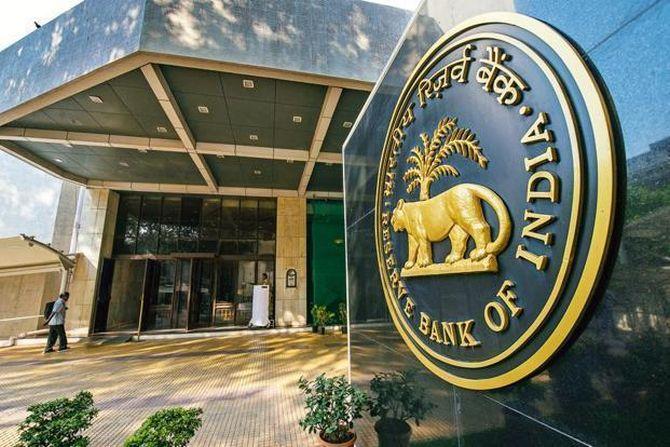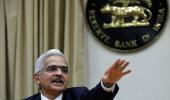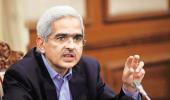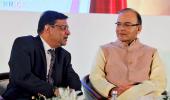RBI in wait and watch mode as several risks to inflation continue to exist including a sudden reversal of food prices and oil price volatility.
Advait Rao Palepu reports from Mumbai.

The slowdown in food and consumer price index (CPI) inflation data left the Reserve Bank of India’s (RBI’s) Monetary Policy Committee (MPC) with little choice but to stay on its course and keep the policy rate same.
Minutes for the RBI’s MPC meeting held between December 3 and 5 reveal that while global economic activity weakened on account of “rising trade tensions”, the sharp decline in crude oil prices in October and November will help “boost India’s growth prospects by improving corporate earnings and raising private consumption through higher disposable income”.
However, while the six members of the RBI’s MPC voted to keep the policy repo rate unchanged at 6.5 per cent, all of them acknowledged that there could be a “reversal” of both food prices and crude oil prices going forward.
This necessitates, the minutes note, that the MPC would need to “wait and watch” these indicators and the incoming data before making any policy announcements at the next MPC meeting scheduled before February 5 to 7.
Former governor of the RBI, Urjit Patel, noted, “Although the inflation trajectory has been revised downwards, several uncertainties persist, especially about the medium-term outlook of food inflation and oil prices.
"Incoming data should help clear the haziness and enable better assessment of the inflation outlook, especially regarding the permanence of the current softness in inflation prints.”
While the CPI declined from 3.7 per cent in September to 3.3 per cent in October, the substance of the fall in inflation is mainly on account of deflation in food prices as domestic farm and industrial input costs remain high.
“Despite a significant scaling down of inflation projections in the October policy primarily due to moderation in food inflation, subsequent readings have continued to surprise on the downside with the food group slipping into deflation.
"At a disaggregated level, deflation in pulses, vegetables and sugar widened, while cereals inflation moderated sequentially,” the minutes said.
CPI inflation, excluding food and fuel, rose to 6.1 per cent by October-end and when adjusted for the estimated HRA impact, the CPI stood at 5.9 per cent.
“The evolution of Minimum Support Price (MSP)-inflation dynamics also needs to be carefully watched, although this risk to inflation projections appears mitigated compared to a few months ago.
"The elevated level of inflation, excluding food and fuel (6.1 per cent) at a 3-month high continues to be problematic... The reversal needs to be carefully watched,” says Dr Chetan Ghate.
The effects of a softening of kharif prices are already impacting the rural economy as rabi sowing (till November) is 8.3 per cent lower than last year, the minutes note.
The crude basket has experienced significant volatility over the past few months, having collapsed to below $60 per barrel by November-end after touching a high of $85 a barrel in early October.
Despite this momentary sign of softening crude oil prices, members of the MPC cautioned that there could be a reversal of this trend as the index for oil price volatility is higher today than it was in October.
Given these risks, the RBI’s revised its inflation projections to 2.7-3.2 per cent in H2 FY2019 and 3.8-4.2 per cent in H1 FY2020, with risks tilted to the upside.
Despite his assent to keeping the policy rate unchanged, Ravindra Dholakia expressed criticism with the previous policy prescriptions by the RBI, saying, “With inflation forecast coming down by around 120 basis points and quarterly growth forecasts marginally revised downward opening up output gap going forward, there is hardly any justification in retaining calibrated tightening stance.
"In my opinion, this would be the right time to cut the rate and bring the unduly high real interest rates in the country back to around 2 per cent.”
The RBI’s gross domestic product (GDP) growth projection remained unchanged at 7.2-7.3 per cent in H2 FY2019, and at 7.5 per cent for H1 FY 2020 with risks somewhat to the downside.
GDP growth slowed down to 7.1 per cent year-on-year in Q2:2018-19, after four consecutive quarters of acceleration as private consumption also slowed down.
Growth in manufacturing declined, thanks to a rise in input costs that led to lower profits, while the services sector growth remained stable as compared to the previous quarter.
The index of industrial production (IIP) slowed down to 4.5 per cent in September 2018, as capacity utilisation (CU) has increased from 73.8 per cent in Q1 FY2019 to 76.1 per cent in Q2 FY 2019.
Further, the MPC found that investment activity is rising, which gives momentum for new capacity additions.
“…Even though the projections have been revised downwards significantly, several upside risks remain. In my view, it is better to understand the data somewhat better over the next two months.
"In other words, while the recent downward surprises to inflation have significantly reduced the extent of policy tightening required in future, they have not eliminated the requirement altogether,” said RBI deputy governor Viral Acharya.
Acharya said even though headline inflation at 12-month horizon is above the target of 4 per cent, a change in stance at the time of the MPC meeting would be premature as there is heightened oil price volatility.
Several risks to inflation continue to exist, including a sudden reversal of food prices, uncertainty over the impact of the minimum support price (MSP) revisions, oil price volatility, volatile international financial markets, higher inflation expectations, second-round effects of the HRA implementation and the risk of fiscal slippages at the Centre and state government levels.
| Why there is uncertainty over rate cut in Feb |
|
Photograph: PTI Photo













 © 2025
© 2025